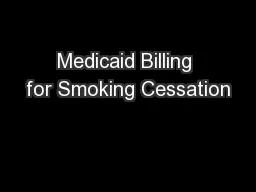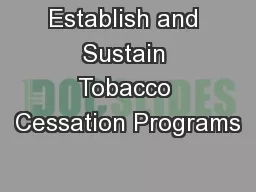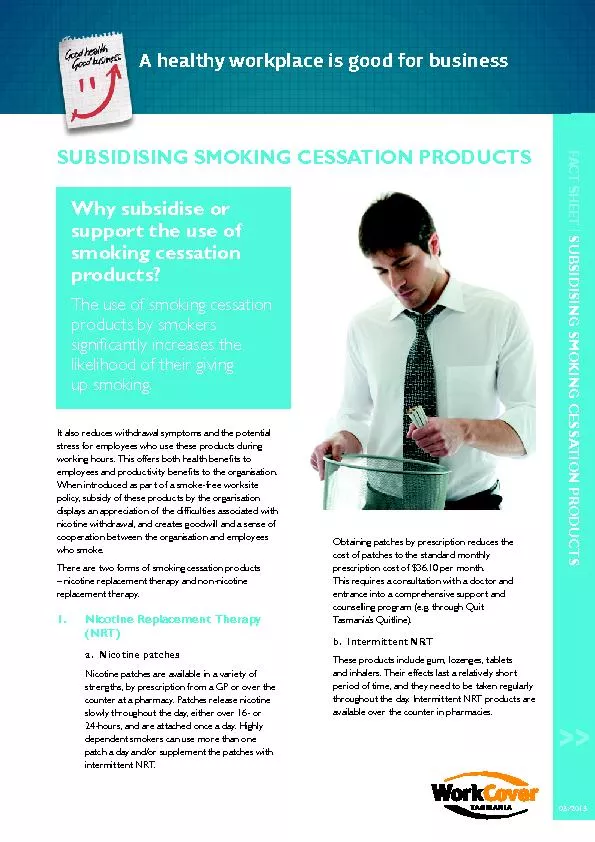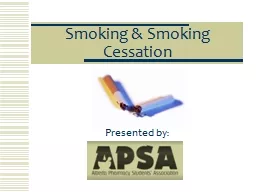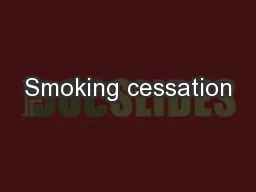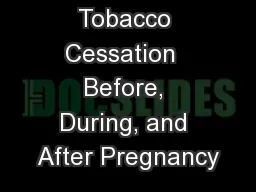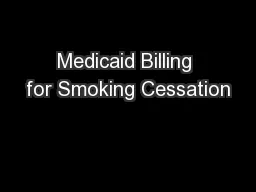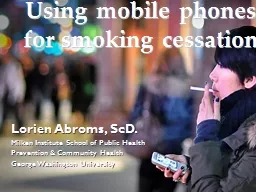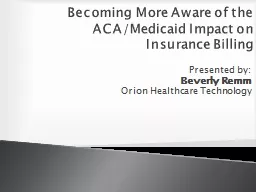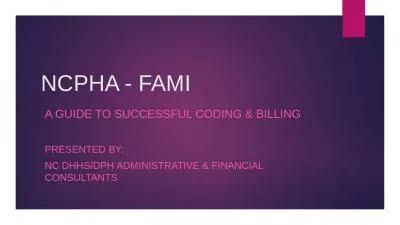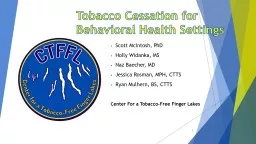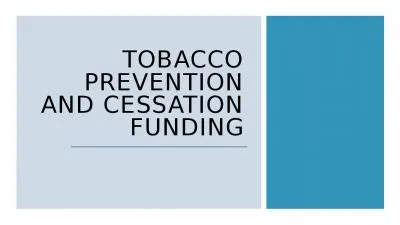PPT-Medicaid Billing for Smoking Cessation
Author : tawny-fly | Published Date : 2016-08-15
Advice Scenarios and Questions from the field February 21 2012 1 Sayone Thihalolipavan MD MPH Director of Cessation NYC Department of Health and Mental Hygiene
Presentation Embed Code
Download Presentation
Download Presentation The PPT/PDF document "Medicaid Billing for Smoking Cessation" is the property of its rightful owner. Permission is granted to download and print the materials on this website for personal, non-commercial use only, and to display it on your personal computer provided you do not modify the materials and that you retain all copyright notices contained in the materials. By downloading content from our website, you accept the terms of this agreement.
Medicaid Billing for Smoking Cessation: Transcript
Advice Scenarios and Questions from the field February 21 2012 1 Sayone Thihalolipavan MD MPH Director of Cessation NYC Department of Health and Mental Hygiene Slides courtesy of Manhattan Tobacco Cessation Program. Background. Misuse and Abuse of Tobacco. Increase rates of cancer. Lung cancer. Heart disease. Poor circulation. asthma. High blood pressure. Smoking can cause damage to the body leading to . many different cancers and chronic diseases . Background. Misuse and Abuse of Tobacco. Increase rates of cancer. Lung cancer. Heart disease. Poor circulation. asthma. High blood pressure. Smoking can cause damage to the body leading to various cancers and chronic diseases . SUBSIDISING SMOKING CESSATION PRODUCTS 03/2013 FACT SHEET SUBSIDISING SMOKING CESSATION PRODUCTS A healthy workplace is good for business Page 2 NRT is safe and e ective, and potentially doubles the c Presented by. :. The Point of this Presentation. To learn about the effects of smoking so that you can make a more educated decision if an opportunity comes for you to start smoking.. To learn about resources for people trying to quit smoking.. Supporting customers to quit. What you need to know. PSA Presentation text. 2. Discuss the health risks associated with smoking, and the benefits of quitting. Apply the 5A principles of smoking cessation to support customers to quit . Tobacco Use Above the Healthy People 2020 Goal. Collect data to better understand the attitudes and behaviors that encourage young people to start smoking. . Strategy 1:. Charlottesville and Albemarle Public Schools, 2010-2014. Smoking . Cessation . Imperative . A . review of current . trends . in . programming. , . incentives . and. . plan . design. November 16, . 2012. . © 2012 beBetter Health, Inc. Confidential. Do Not Distribute.. Co-presented by Stephanie Wolf, KDHE. And Terrah Stroda, . Flinthills. OBGYN. Background. Smoking in pregnancy in . kansas. Kansas Statistics. Mother's Reported Cigarette Use by Weeks Gestation, Kansas, 2014. Advice, Scenarios, and Questions from the field. February 21, 2012. 1. Sayone Thihalolipavan, MD, MPH. Director of Cessation, NYC Department of . Health . and . Mental Hygiene. Slides courtesy of Manhattan Tobacco Cessation Program. Lorien Abroms, ScD.. Milken Institute School of Public Health. Prevention & Community Health. George Washington University. . . Topics I. ’. ll cover. Current Research Program. Future opportunities. Becoming More Aware of the ACA/Medicaid Impact on Insurance Billing Presented by: Beverly Remm Orion Healthcare Technology Medicaid Background Affordable Care Act Overview ACA Medicaid Expansion and Coverage Presented by:. NC DHHS/DPH Administrative & Financial Consultants. How Can We Increase our Revenue?. Client Education. Establish Expectations for Payment. Explain the Need for Payment. Develop a Payment Plan. Scott McIntosh, PhD . Holly . Widanka. , MS. Naz Baecher, MD. Jessica Rosman, MPH, CTTS. Ryan Mulhern, BS, CTTS. C. enter For a Tobacco-Free Finger Lakes. 1. Center for a Tobacco-Free Finger Lakes. The Toll of Tobacco. Toll of Tobacco on Michigan. Tobacco use remains the leading cause of death in Michigan with 16,200 adults dying each year from smoking.. We most often think of smoking and the lungs, but smoking harms nearly every organ in the body..
Download Document
Here is the link to download the presentation.
"Medicaid Billing for Smoking Cessation"The content belongs to its owner. You may download and print it for personal use, without modification, and keep all copyright notices. By downloading, you agree to these terms.
Related Documents

